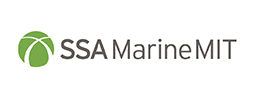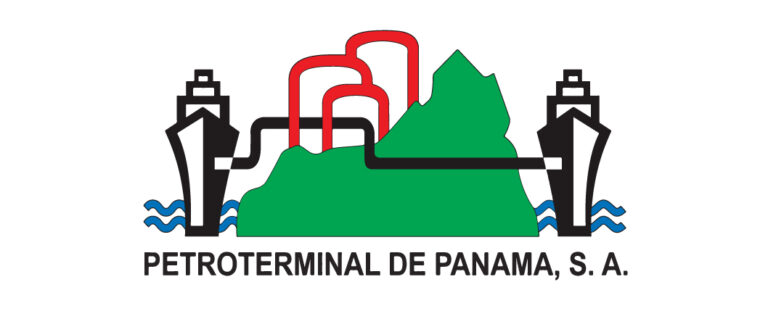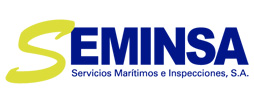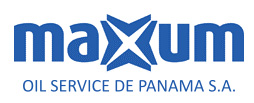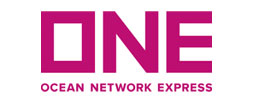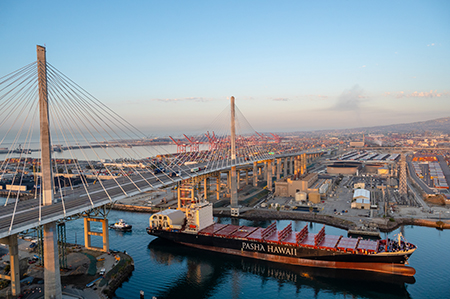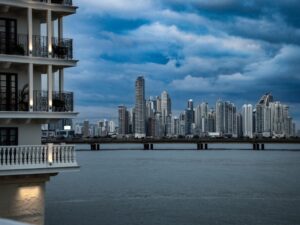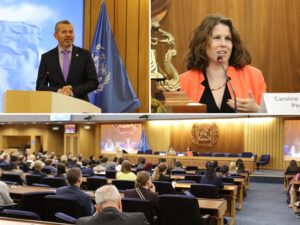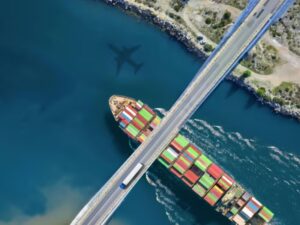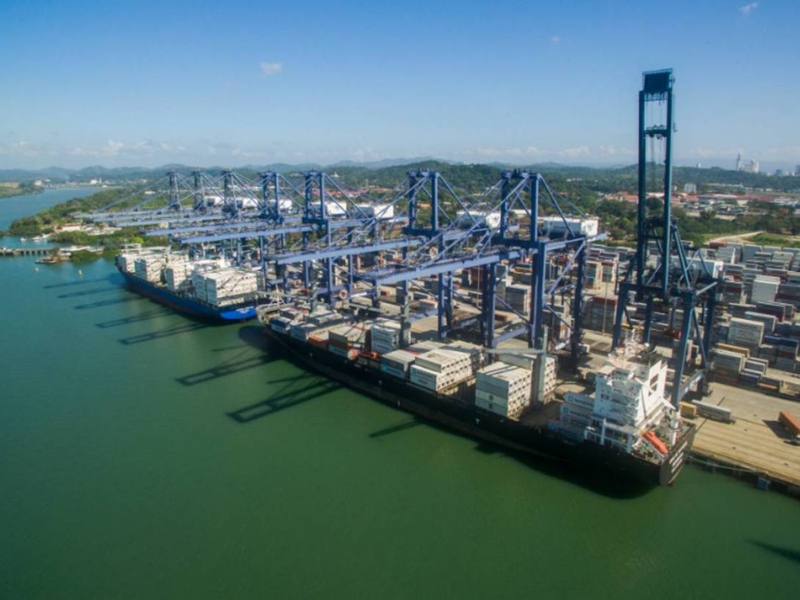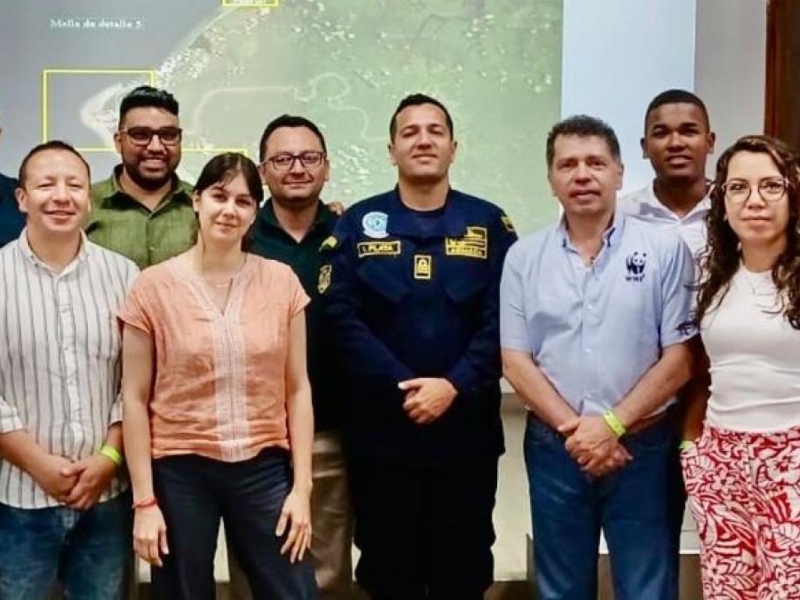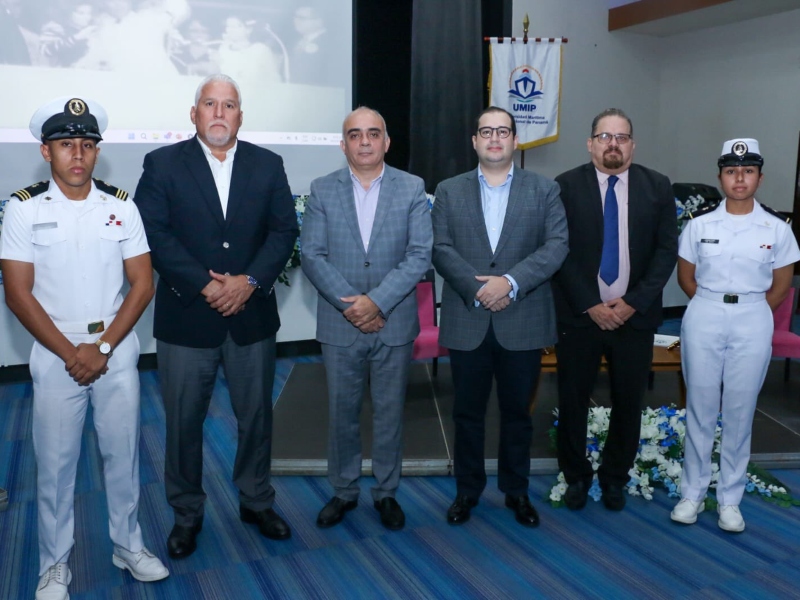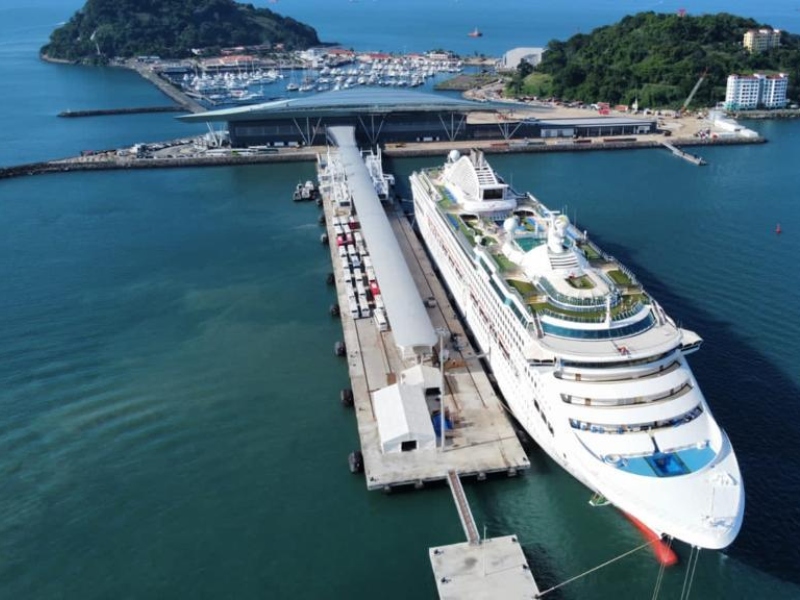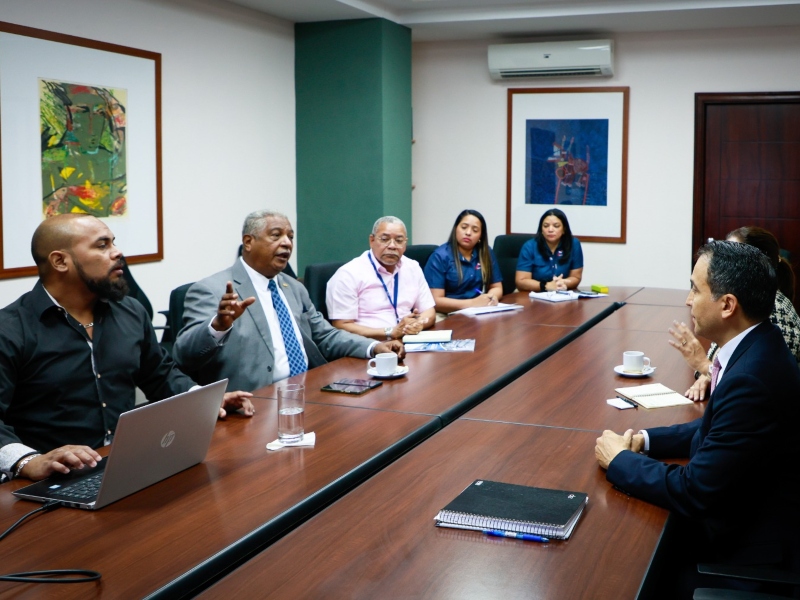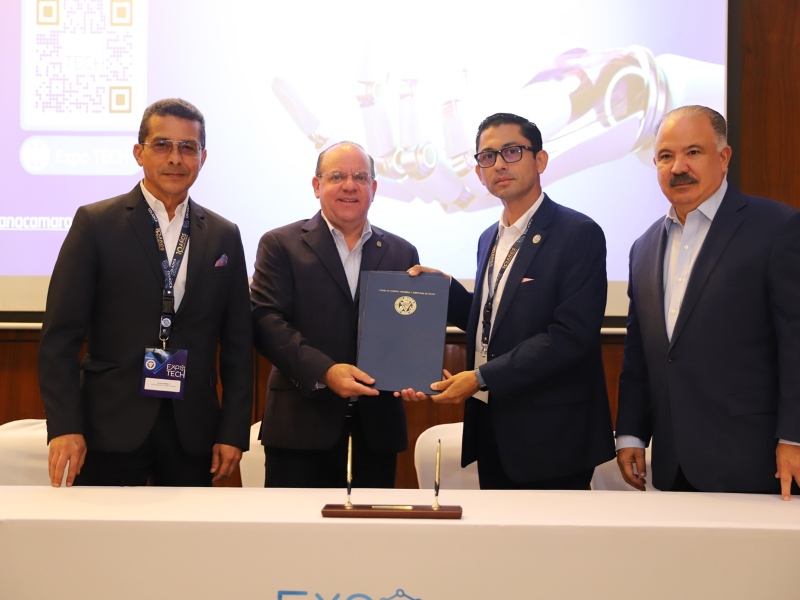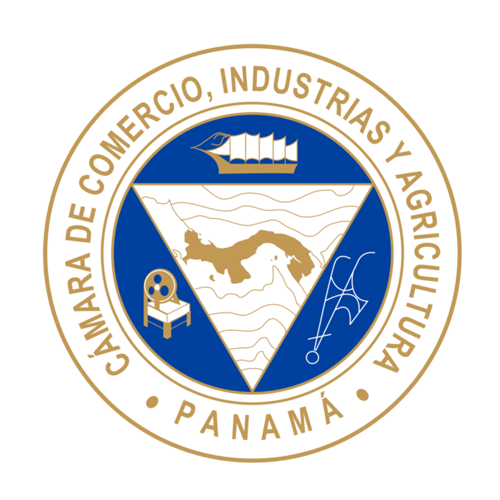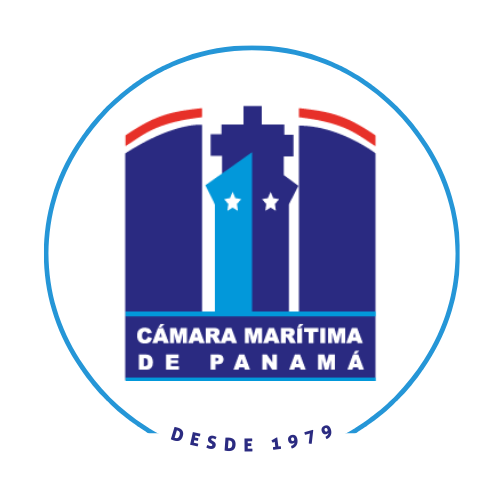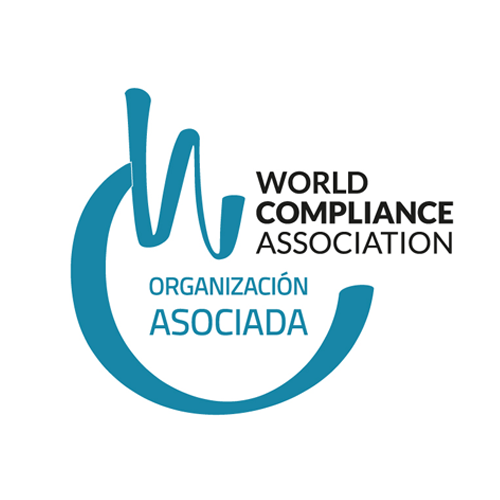The Port of Long Beach in August 2022 welcomed Pasha Hawaii’s MV George III, the first container ship powered by liquefied natural gas to refuel on the West Coast.
Source: Port Of Long Beach
The Maritime and Port Authority of Singapore (MPA), Port of Long Beach, Port of Los Angeles, and C40 Cities have begun discussions to establish a green and digital shipping corridor between Singapore and the San Pedro Bay port complex. The corridor will focus on low- and zero-carbon ship fuels, as well as digital tools to support deployment of low- and zero-carbon ships.
This collaborative effort supports the Green Shipping Challenge launched during the World Leaders’ Summit at the 27th United Nations Climate Change Conference (COP27) in Sharm el-Sheikh, Egypt, this week. Convened by the United States and Norway, the Green Shipping Challenge encourages governments, ports, maritime carriers, cargo owners and others in the shipping value chain to commit to concrete steps at COP27 to galvanize global action to decarbonize the shipping industry.
“Decarbonizing the supply chain is the future of our industry, and partnerships like this on the world’s most important trade route are important for fulfilling that ultimate goal,” said Port of Long Beach Executive Director Mario Cordero. “We’re excited about developing this initiative in the coming months and what it means for making operations more efficient while advancing the fight against global warming.”
“Reducing greenhouse gas emissions in the maritime supply chain is essential, and this trans-Pacific partnership will help us build a network of ports and key stakeholders to help decarbonize goods movement throughout the Pacific region,” said Port of Los Angeles Executive Director Gene Seroka. “We look forward to coordinating with our partners to develop an implementation plan on this critical initiative.”
As hub ports, Singapore, Long Beach, and Los Angeles are vital nodes on the trans-Pacific shipping lanes and key stakeholders in the maritime sector’s green transition. The three ports and C40 Cities will work closely with other stakeholders in the maritime and energy value chains to accelerate the deployment of low- and zero-carbon emission solutions, identify digital shipping programs, and develop green fuel sources for bunkering to support efficient cargo movement. In addition to reducing greenhouse gas emissions, the green and digital shipping corridor aims to catalyze investment in green infrastructure, including zero-carbon energy hubs linked to port and shipping demand.
“The trans-Pacific corridor is one of the busiest trade routes in the world,” said Teo Eng Dih, Chief Executive of MPA. “MPA is pleased to support the development of a green and digital shipping corridor with the USA through the Port of Los Angeles and the Port of Long Beach, given their strong connectivity and existing initiatives with C40 Cities. Through this corridor, we hope to support the decarbonization of global supply chains, complementing efforts undertaken by the industry and the International Maritime Organization to drive the decarbonization and digital transition for international shipping.”
“Accelerating efforts to decarbonize the shipping sector is urgent if we are to limit global warming to 1.5°C,” said C40 Executive Director Mark Watts. “This initiative has the potential to serve a range of carriers and routes by reimagining infrastructure designs and operational best practices, and advancing the feasibility of zero-carbon fuel production, supply, storage and bunkering.”
![]()








